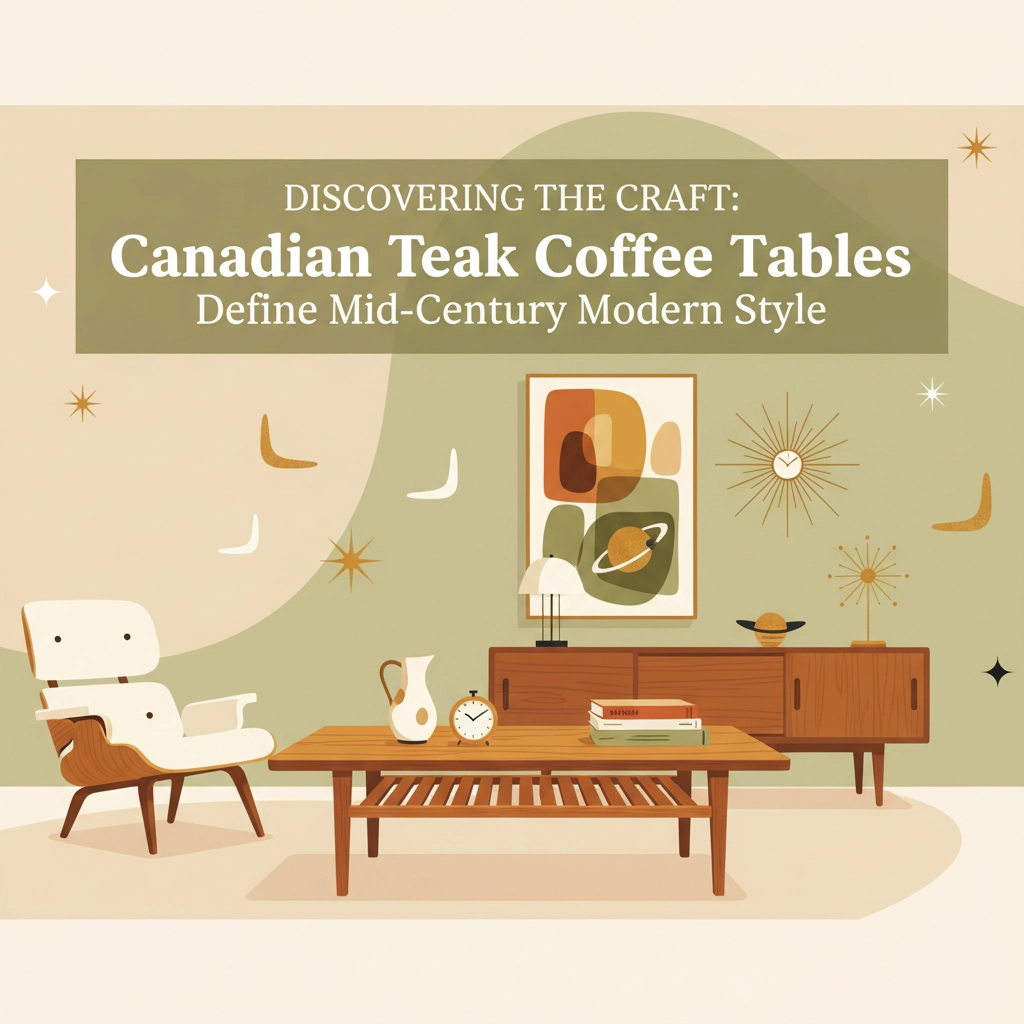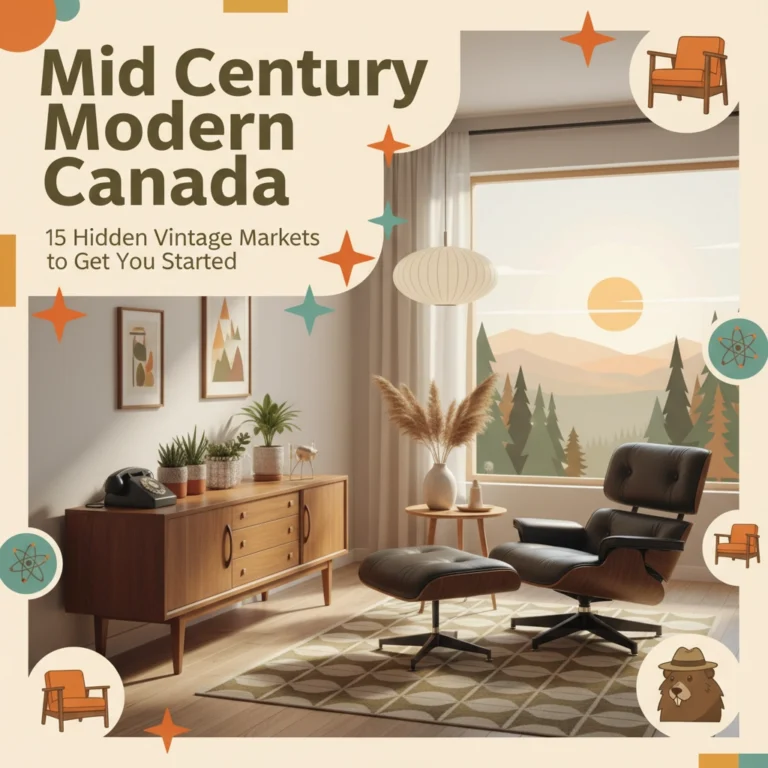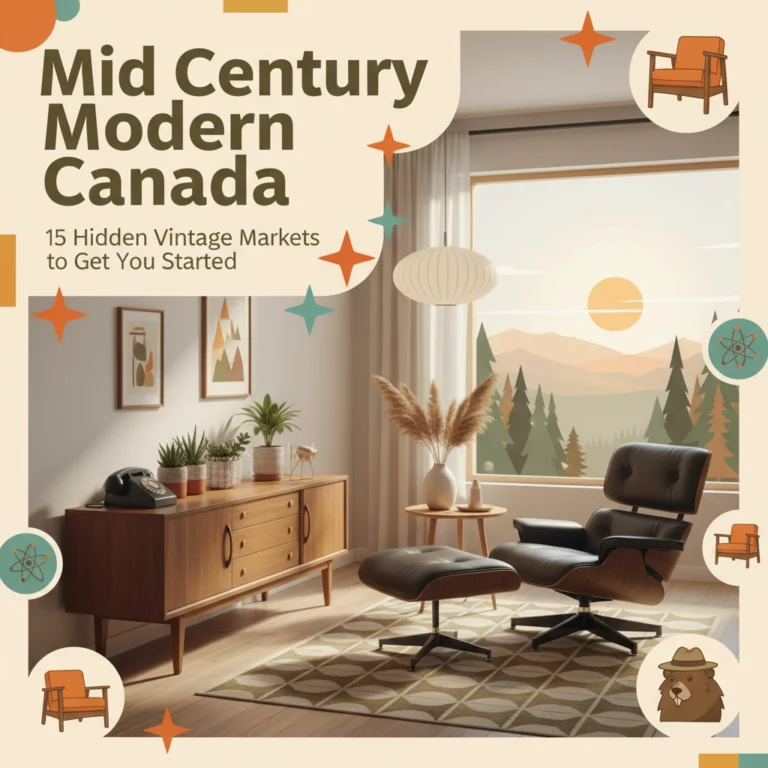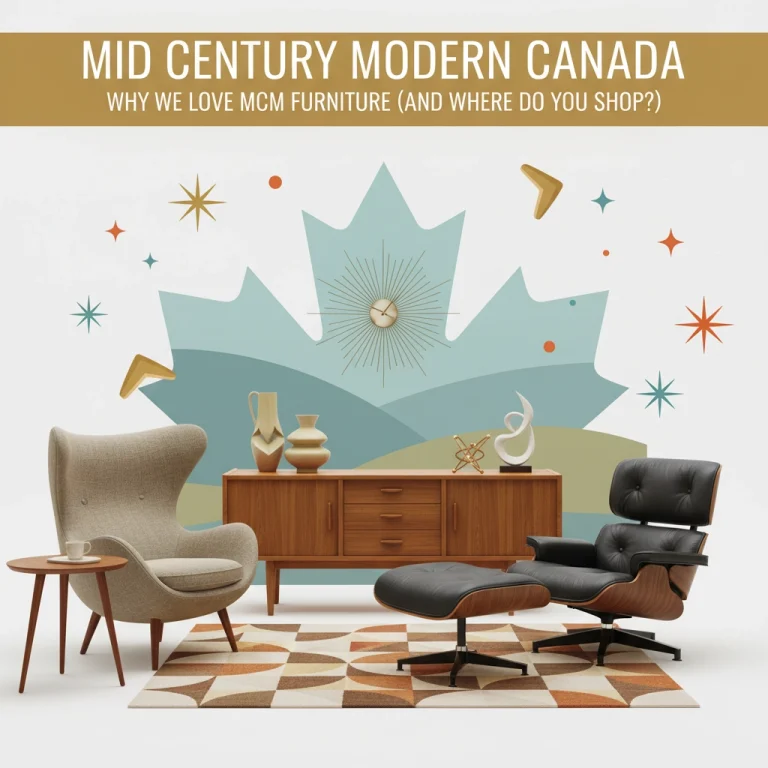If you've ever wondered what makes Canadian teak coffee tables so special in the world of mid-century modern, you're in for a treat. These aren't just furniture pieces – they're time capsules from Canada's golden age of design, roughly spanning 1955 to 1975.
Canadian makers didn't just copy what was happening south of the border or across the Atlantic. They took those clean MCM lines and infused them with something uniquely North American. The result? Coffee tables that perfectly capture the optimism and craftsmanship of the era.
The Canadian Touch: What Sets These Tables Apart
Canadian teak coffee tables from the mid-century period have a distinct personality. While Danish makers were perfecting their minimalist aesthetic and American designers were going bold with space-age forms, Canadian craftsmen found their sweet spot right in between.
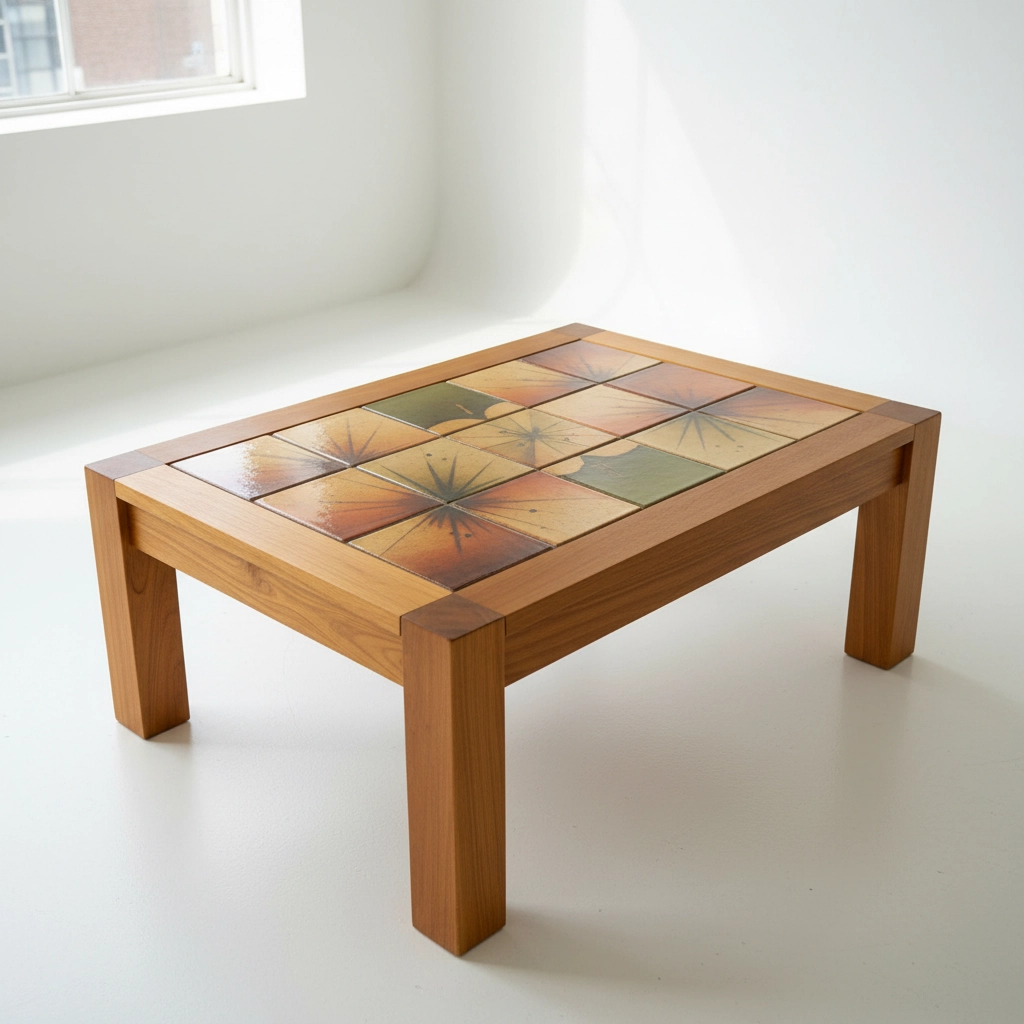
You'll spot a Canadian MCM coffee table by its robust construction and thoughtful details. These weren't mass-produced pieces churned out for quick sales. Canadian furniture makers of the 1960s took their time, using traditional joinery techniques alongside modern design principles.
Take those gorgeous teak and ceramic tile combinations that became a Canadian signature. Picture this: golden teak frames surrounding original ceramic tiles in earthy tones – sometimes geometric patterns, sometimes solid colors that complemented the wood's natural warmth. It's a marriage of materials that screams "Canadian mid-century" from across the room.
The best Canadian pieces feel both modern and timeless – exactly what MCM was meant to achieve.
Design DNA: Reading the Lines
Canadian teak coffee tables speak a specific design language. The proportions tend to be generous without being bulky – these tables were built for Canadian homes, which often had more space than their European counterparts.
Look for clean horizontal lines that seem to stretch endlessly. Canadian designers loved playing with length, creating coffee tables that could anchor a conversation area without overwhelming it. The legs? Usually tapered, sometimes splayed, always purposeful.
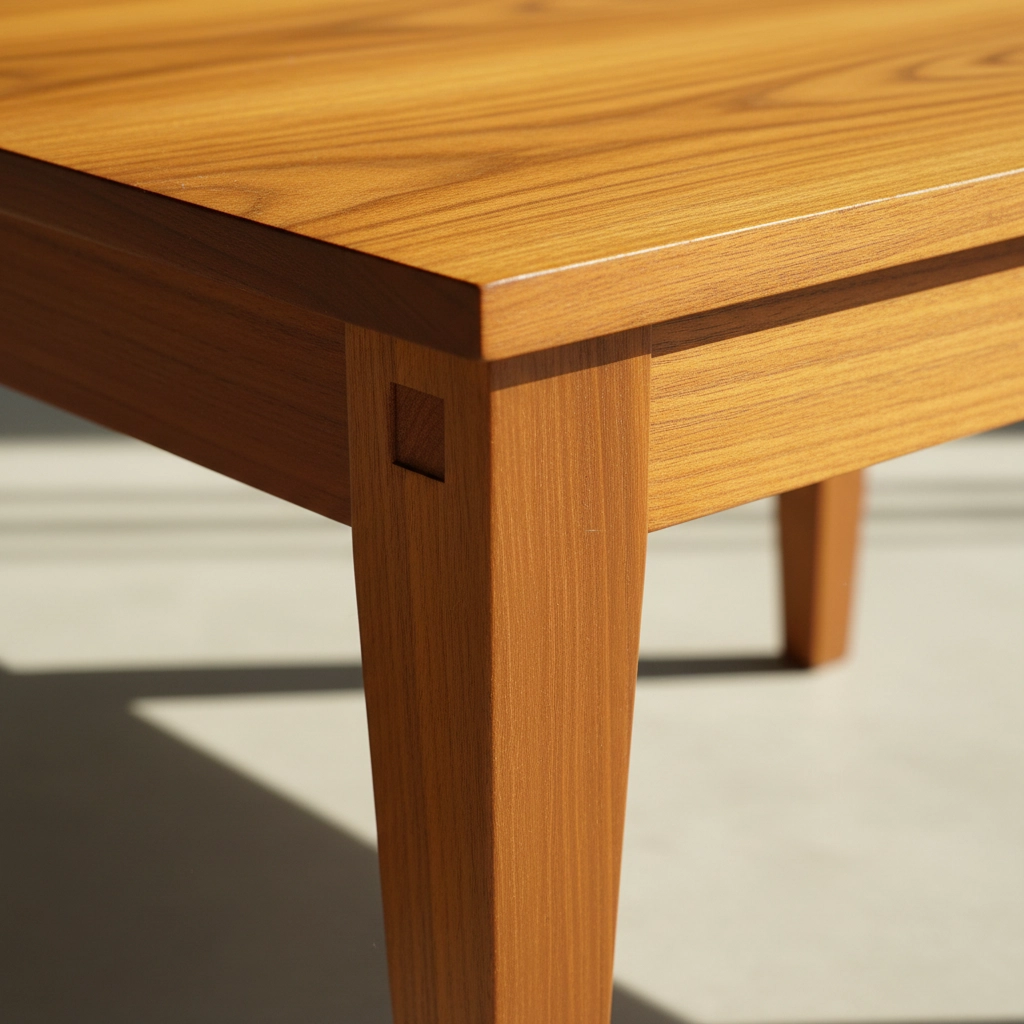
The surfaces tell their own story. Book-matched veneer was huge – those mirror-image grain patterns that make you stop and stare. Canadian woodworkers were masters at selecting and matching teak veneer, creating tabletops that looked like natural artwork.
Many Canadian pieces also featured subtle curves where you'd least expect them. A gentle bow in the tabletop edges, or legs that curved ever so slightly inward. These weren't accidents – they were deliberate choices that softened the geometric forms without compromising the modern aesthetic.
Craftsmanship That Stands the Test of Time
Here's where Canadian teak coffee tables really shine – the construction quality is simply outstanding. These weren't built to last a few years; they were built to last decades.
Canadian makers used solid teak construction in ways that would make modern manufacturers weep. Thick tabletops, not veneered particle board. Mortise and tenon joints, not screws and glue. The attention to detail extended to things you'd never see – like perfectly finished undersides and reinforcement blocks that were works of art in themselves.
The finish work on Canadian pieces deserves special mention. That warm, golden glow you see on well-preserved examples? That's not just good teak – that's skilled finishing. Canadian craftsmen developed techniques for bringing out teak's natural beauty while protecting it for generations of use.
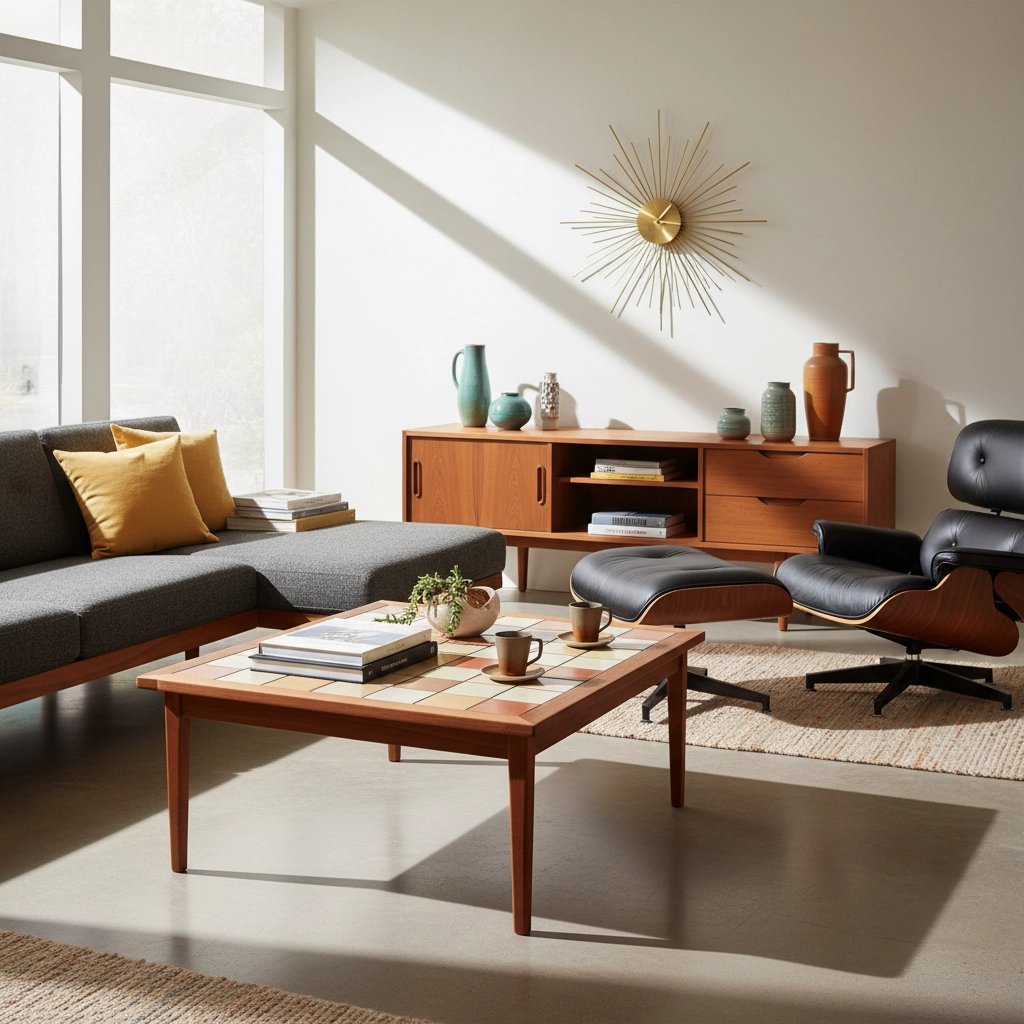
Spotting the Real Deal: Authentication Tips
With Canadian MCM coffee tables commanding serious collector attention, knowing how to identify authentic pieces is crucial. Here's what to look for:
Construction clues are your best friend. Real Canadian teak tables feel substantial – they've got weight and presence. Check the joinery; you should see evidence of traditional woodworking techniques, not modern shortcuts.
Maker's marks can be tricky with Canadian pieces. Many smaller workshops didn't consistently mark their work, but some did use paper labels or small metal tags. Look on the underside, but don't despair if you don't find anything – unmarked doesn't mean inauthentic.
The teak itself is a dead giveaway when you know what to look for. Canadian-made pieces typically used Burma teak (now Myanmar) imported specifically for furniture making. The grain should be consistent and rich, with that characteristic golden-brown color that deepens with age.
Pro tip: Run your hand along the edges. Quality Canadian work feels smooth and perfectly finished, even in spots you'd never normally touch.
Styling Your Canadian Teak Coffee Table
These tables are design chameleons – they work beautifully in pure MCM settings, but they're equally at home in eclectic or even contemporary spaces. The key is respecting their inherent character while making them work for your lifestyle.
In a classic MCM living room, pair your Canadian teak coffee table with period-appropriate seating. Think low-slung sofas in neutral tones, maybe a pair of Danish lounge chairs. Keep accessories minimal – a ceramic bowl, a few art books, perhaps a small sculptural piece.
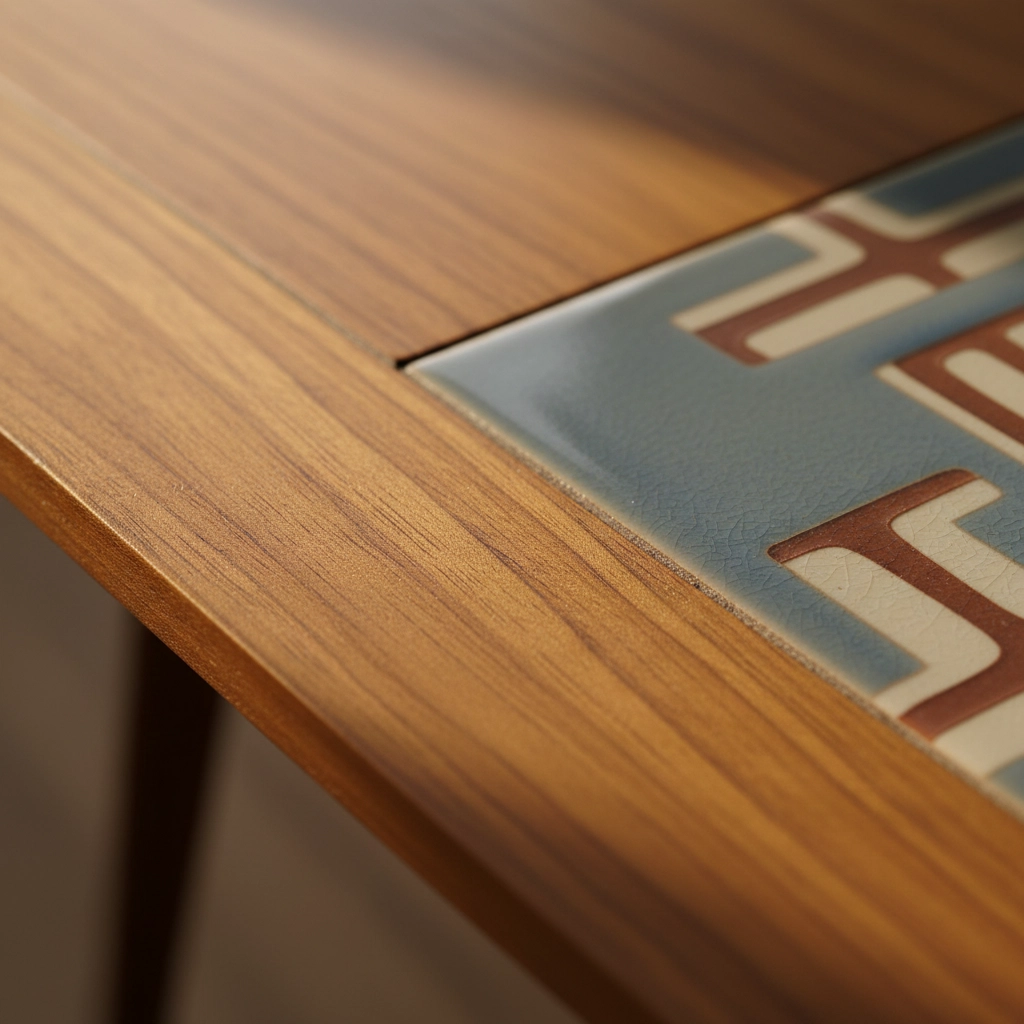
For contemporary spaces, let the table be your vintage anchor. Surround it with modern seating in bold colors or interesting textures. The warm teak will ground the space while the clean lines keep everything feeling fresh and uncluttered.
Mixed-material styling works beautifully with Canadian pieces, especially those teak and tile combinations. Play up the texture contrast with woven textiles, ceramic accessories, or even some carefully chosen plants. Succulents look fantastic with teak – there's something about that desert-meets-forest vibe that just works.
The Perfect Foundation for MCM Living
Canadian teak coffee tables do more than hold your coffee cup – they anchor entire living spaces. Their generous proportions and honest materials create a sense of stability and warmth that's hard to achieve with modern reproductions.
These pieces work particularly well in open floor plans, where their substantial presence helps define conversation areas without blocking sight lines. The horizontal emphasis of most Canadian designs reinforces the low, sprawling aesthetic that makes MCM interiors feel so relaxed and inviting.
Remember: MCM was about making life better through design, and these Canadian tables deliver on that promise every single day.
Finding Your Perfect Piece
Ready to add a genuine Canadian teak coffee table to your MCM collection? The hunt can be incredibly rewarding, but it takes patience and knowledge.
Estate sales in areas with established mid-century neighborhoods often yield incredible finds. Online marketplaces can work too, but nothing beats seeing and touching a piece in person before you commit.
When you do find that perfect Canadian teak coffee table – whether it's a sleek rectangular design or one of those amazing teak and tile combinations – you'll know it's right. These pieces have a presence that reproductions simply can't match.
Share Your MCM Treasures
Got a Canadian teak coffee table gathering dust in storage? Or maybe you've outgrown a piece that deserves a new home where it'll be properly appreciated?
Consider listing it for free on Mid Century Classifieds. It's a community of people who genuinely understand what makes these pieces special. No commission, no hidden fees – just a place where MCM lovers connect over authentic vintage finds.
Your Canadian teak coffee table isn't just furniture – it's a piece of design history that deserves to be cherished by someone who truly gets it.


